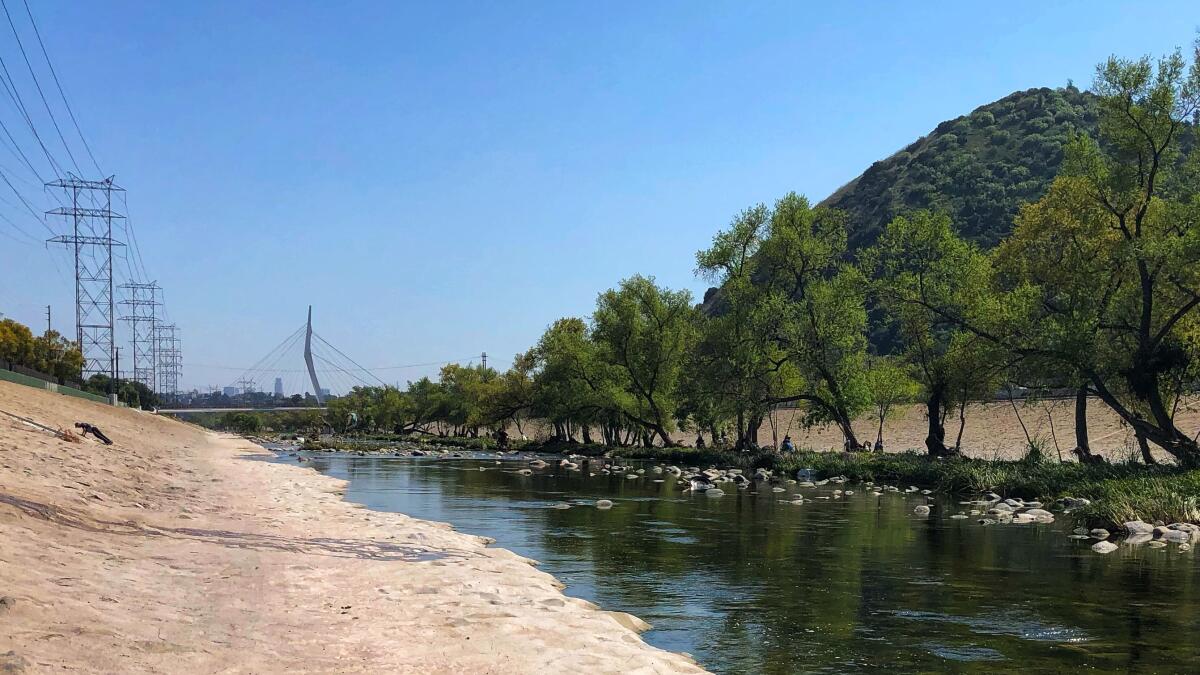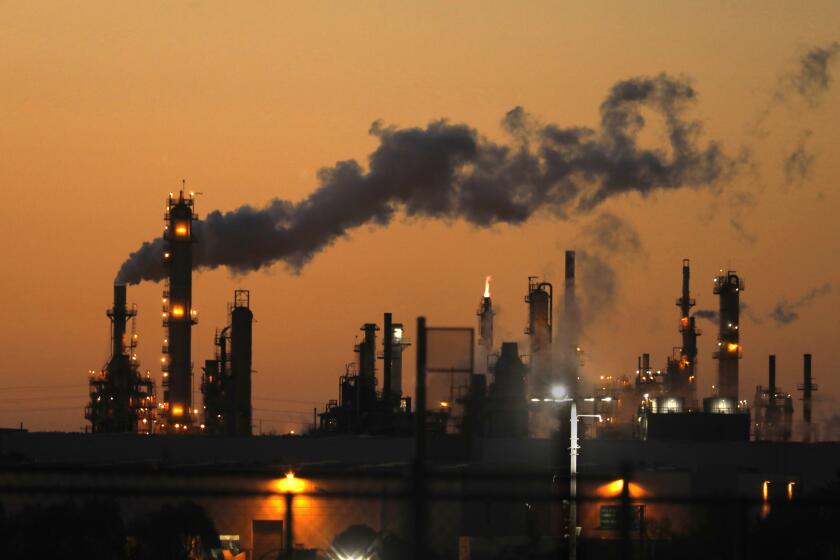Letters to the Editor: Nature sustained the L.A. River before humans intervened. Give it another chance

- Share via
To the editor: Arguments about whether or not to give the Los Angeles River life support, and about what is or isn’t “wasted” water when it’s left in a damaged ecosystem, brought to my mind a few points.
First, we’ve destroyed more than 90% of our rivers, streams and wetlands in the L.A. area.
Second, I recall this quote, circa 1879, from state engineer William Hammond Hall (no relation) about the flows in the L.A. River near downtown:
“In May last the discharge of the river at the mouth of Tujunga Wash 10 miles above the city, where the upper dam of the Los Angeles irrigation system is located, was 24-1/2 cubic feet per second. This amount was augmented by about 54 cubic feet per second from springs rising in the bed of the river at various points between this dam and the city. The total available supply therefore was about 78-1/2 cubic feet per second. An amount which is but little diminished during the summer months.”
(The location of that dam was about where the Tujunga Wash today meets the L.A. River in the vicinity of North Hollywood.)
I do puzzle over how we can claim to be doing “integrated” and “one water” planning without also restoring those natural features that evolved over millennia to not only transport and recharge water, but sustain human and non-human communities.
Jessica Hall, Eureka, Calif.
The writer is a landscape architect and co-founder of the blog L.A. Creek Freak.
..
To the editor: The L.A. River in its natural state ran underground most of the year. It cold be a raging torrent during rain storms and still is.
There is still natural flow in Glendale and Atwater, where groundwater upwells into the river where the bottom is not lined. This is the flow that should be used in any river plan for recreation.
The other “normal” flow comes from the wastewater plants that treat and discharge the sewage water generated from imported potable water. Many parties want rights to that water for their river projects. Ultimately, is it sustainable, or does it make any sense to import a river?
Bill Mace, San Gabriel
The writer was assistant general manager for water systems in Burbank from 2004-2018.
..
To the editor: Permit no water to flow in the L.A. River? I was struck particularly by the words of Michael De Ghetto of Glendale Water and Power: “What a waste of precious water.”
It is always a competition between mankind’s demands and the natural world.
De Ghetto, perhaps unconsciously, channeled William Mulholland, who acted as if rivers existed only to be used. If it were left up to him, he once said, he would have the Yosemite Valley carefully photographed and then “build a great dam and stop all the ... waste.”
Bob Wieting, Simi Valley









